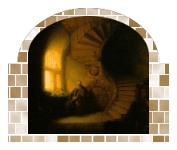
|
|
|||||||
Introduction to the TarotTarot is one of the oldest divinatory arts - almost as old as the history of humankind. In ancient Egypt, the Book of Thoth originated - the first known use of the Tarot deck. Tarot diagrams have been found in various chambers of Egyptian tombs, Pyramids, and initiation chambers. The Book of Thoth was rejuvenated by Aleister Crowley near the turn of the century, and is the mainstay deck used by Rajuna in her readings. Over the millenia, the Tarot has retained its’ credibility as a proven method to read the energies of a person’s situation, personality, and probable future. Kabbalistic studies, initiated in Ancient Hebrew societies, incorporated the study of Tarot into all of the training of initiates and adepts. Some metaphysical scholars have even traced the use of the Tarot back to Atlantean and Lemurian times. For instance, Hermetic tradition dates the Tarot cards back 35,000 years!The Tarot used today consists of 78 cards each with a unique illustration, representing specific qualities and energies. Like modern playing card decks, there are four suits, - Wands, Cups, Swords, and Coins or Pentacles (called Discs in Crowley’s work). The Tarot represents the Tree of Life in its universal aspect.
The Major Arcana
consists of 22 Trumps (called Keys or Atus in Egyptian Tarot)
which include The Fool, The Magician, The High Priestess, The Empress, The Emperor, The
Hierophant (or Pope or High Priest), The Lovers, The Chariot, Strength, The Hermit, The Wheel
of Fortune, Justice, The Hanged Man, Death, Temperance, The Devil, The Tower, The Star, The
Moon, The Sun, Judgement, and The World.
I encourage people to approach the Tarot in an open and relaxed way. Set the stage for your learning: do it somewhere peaceful where you won't be disturbed, have a window open if possible where you can attune to nature in some way and ventilate the room; light a candle(s); burn some essential oil (aromatherapy) or incense; and put on music that you know soothes you. Then sit with the cards cupped between both hands for a few minutes until you feel the inner urge to begin to shuffle. Shuffle the deck, again until you feel like it is time to stop. Place the cards on a table in front of you and cut the deck - letting your hand lead you. All steps are done intuitively - trust your Higher Self to tell you when it is time to perform each step. Now, sit with the first card that you draw. Notice the images that are on it and intuitively grasp the meaning of each one. What story does this card tell you? What concepts come up as you mull on it? Notice whether it was drawn in an upright position or was it upside down (there are two different meanings to each card: the yin and yang of each).
It is one thing to be able to read the cards "correctly" - being able to remember the standardized accepted meanings of each as you read. It is another thing to intuit the meaning of the card for the person being read for. To marry the two is the goal - and the diligent tarot scholar's reward. I encourage each of my kind visitors to consider learning to read the Tarot for themselves. All you need is a deck of Tarot cards, a good book or two, and time and devotion to learn to read them from your soul, rather than from a chart or page. While you are learning the art of reading, or if you haven’t the time to do it yourself, please consider coming to my chat room and booking a Tarot reading online. Readings can either be live in my chat room, or via email. Payment is easy and can also be done online. Click on the icon below to place your secure order.

| ||||||||







 Have a reference source close at hand and when you feel ready to read about the card, turn to the page of your source that describes the card you have drawn. See what the book or site has to say about it. Did your impressions reflect the "traditional" meaning of the card?
Have a reference source close at hand and when you feel ready to read about the card, turn to the page of your source that describes the card you have drawn. See what the book or site has to say about it. Did your impressions reflect the "traditional" meaning of the card?